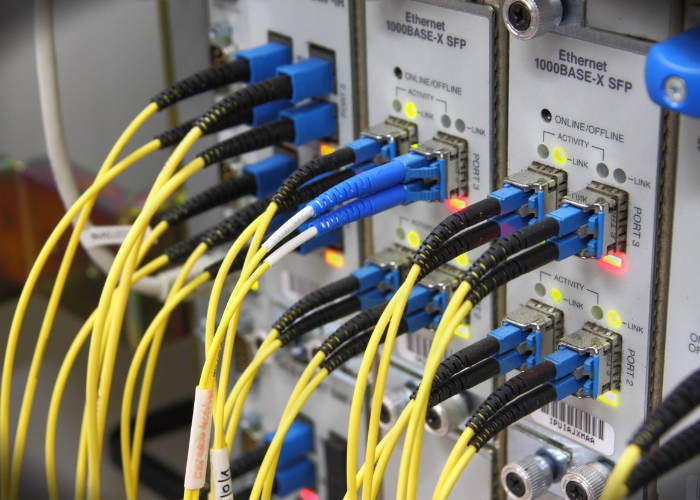In the modern world, the expansion of Optical Fibre Cable (OFC) network tenders can be marked as a significant turning point in the development and advancement of communication infrastructure. Government agencies just as the private sector have laid optical fibre networks through out the country. It is quite common for a Chief Minister of a State or the Prime Minister of the country or senior bureaucrats to have a video conference using a closed OFC based network. As many of the government communications are sensitive, the government advertised many tenders to lay a dedicated OFC network specifically to address its communication requirements. When an OFC network is laid, a lot of effort is required to maintain this network. For this, many different types of equipment needs to be purchased such as OFC splicing machine, OFC Fiber box, Fiber optic patch cord and so on. Besides, OFC cabling is also used for LAN cabling work within the government offices. In India, many government offices are quite large with several thousands of staff working in a single location. They all need to be connected to high speed internet, for which OFC cables are laid within large government offices. Thus, the need for OFC equipment has increased in the recent years. This tender analyses the OFC cable procurement undertaken by the government during the last year.
Annual Analytics:
The annual analytics of the tender data reveals important patterns in the procurement practices of various states and government organisations. The states with the highest number of OFC cable tenders are Rajasthan with 258 and Jammu and Kashmir 811 tender advertisements. With 811 and 258 tenders, the Indian Army of Jammu and Kashmir and Rajasthan respectively stand out among other agencies, which is followed by 220 tenders released by Hindustan Petroleum Corporation Limited. Some other noteworthy organisations are the Department of Defence (Uttar Pradesh), Indian Oil Corporation Limited (Rajasthan), and the Central Armed Police Forces (Madhya Pradesh) with 101, 40 and 130 tender releases respectively. These tenders indicate a wide range of procurement demands across several regions and sectors. These sectors include public works, defence, infrastructure development and others.
OFC cable tenders:
OFC cables are cables that are made up of strands of glass or plastic fibre. This kind of cable uses light pulses in order to transfer data at high speed. Due to its low attenuation, and large bandwidth and resistance to electromagnetic interference, OFC cables are being widely used in various sectors. It is mostly used in computer networking and telecommunications. A total of 279 tenders were published for the procurement of OFC cable by government agencies across India. Often OFC cables are purchased together with other items such as EPABX and CCTV. The Central Public Works Department for example published a tender for the installation of EPBAX systems, electrical equipment, and CCTV networks at a newly constructed women’s trainees hostel in Bhubaneswar.. Another big tender was issued by THE SINGARENI COLLIERIES COMPANY LIMITED in Telengana, which covers EPABX equipment and OFC cables. The tender spans for three years with an estimated value of 40 lakhs. Some other notable tenders are tender for repairing and jointing of OFC cable for LAN on an as-needed basis at Bina Project, NCL, with an estimated value of 1.81 lakh, issued by the Northern Coalfields Limited, Uttar Pradesh. The Capital Project Administration issued a tender for supplying and laying OFC cable and data switch in the record room at the backside of Satpuda Bhawan, Bhopal worth of 14.37 lakhs released..
Optical Fibre cable tenders:
Optical fibre cables are arrangements which resemble an electric cable but have one or more optical fibres that are used to convey or carry lights. Usually, each optical fibre element is covered with a layer of plastic and housed in a protective tube that is appropriate for the environment in which the cable is used. Many government agencies advertised tenders for the procurement of optical fiber cables. States like Uttar Pradesh, Odisha, and Karnataka have shown much interest in optic fibre cables and hence, issued multiple tenders for them. This highlights a strong emphasis on the development and enhancement of communication networks in these areas. ePUBLISH from Maharashtra has issued a tender with an estimated worth of 35 lakhs for the procurement of optical fibres, while Airport Authority of India in Maharashtra released a tender for the supply, installation, testing and commissioning of optic fibre cable network for ILS-Nav Aids sites at Hubbali Airport. These tenders demonstrate the rising need of optical fibre cable networks for improved connectivity and high speed data transfer. A big tender worth of 3.18 crores was also issued by the Delhi Metro Rail Corporation Limited for the supply, laying, installation and all other required necessities of optical fibre cable for ATS network for OCC at Metro Bhawan and Shastri Park. The range of these optical fibre cable tenders highlight how crucial this technology is for the modernisation of communication infrastructure and various other sectors such as healthcare, defence and transportation.
Live Tender Analysis:
The live tender analysis highlights that Uttar Pradesh has issued the highest number of tenders, 23% of all the tenders across the 34 States and Union Territories. Following Uttar Pradesh are Odisha and West Bengal with 18% and 16% of all tenders respectively. Maharashtra and Delhi are closely behind with 15% and 14% respectively while the remaining tenders were released by Assam and Tamil Nadu respectively with 9% and 7% of all tenders.
Conclusion:
The rapid growth of optical fibre cable or OFC network tenders highlights the crucial role that digital connectivity plays in the development of modern infrastructure. With states like Uttar Pradesh, Odisha and Rajasthan being the leading tender issuers, the requirement of smooth and reliable data transfers and high speed communications is evident across various industries. All these tenders indicate a deliberate attempt to update communication infrastructure and adopt cutting-edge technologies in order to fulfill the changing demands of all the various industries. Manufacturers and distributors of these devices are advised to closely monitor these prospects and capitalize on them.





